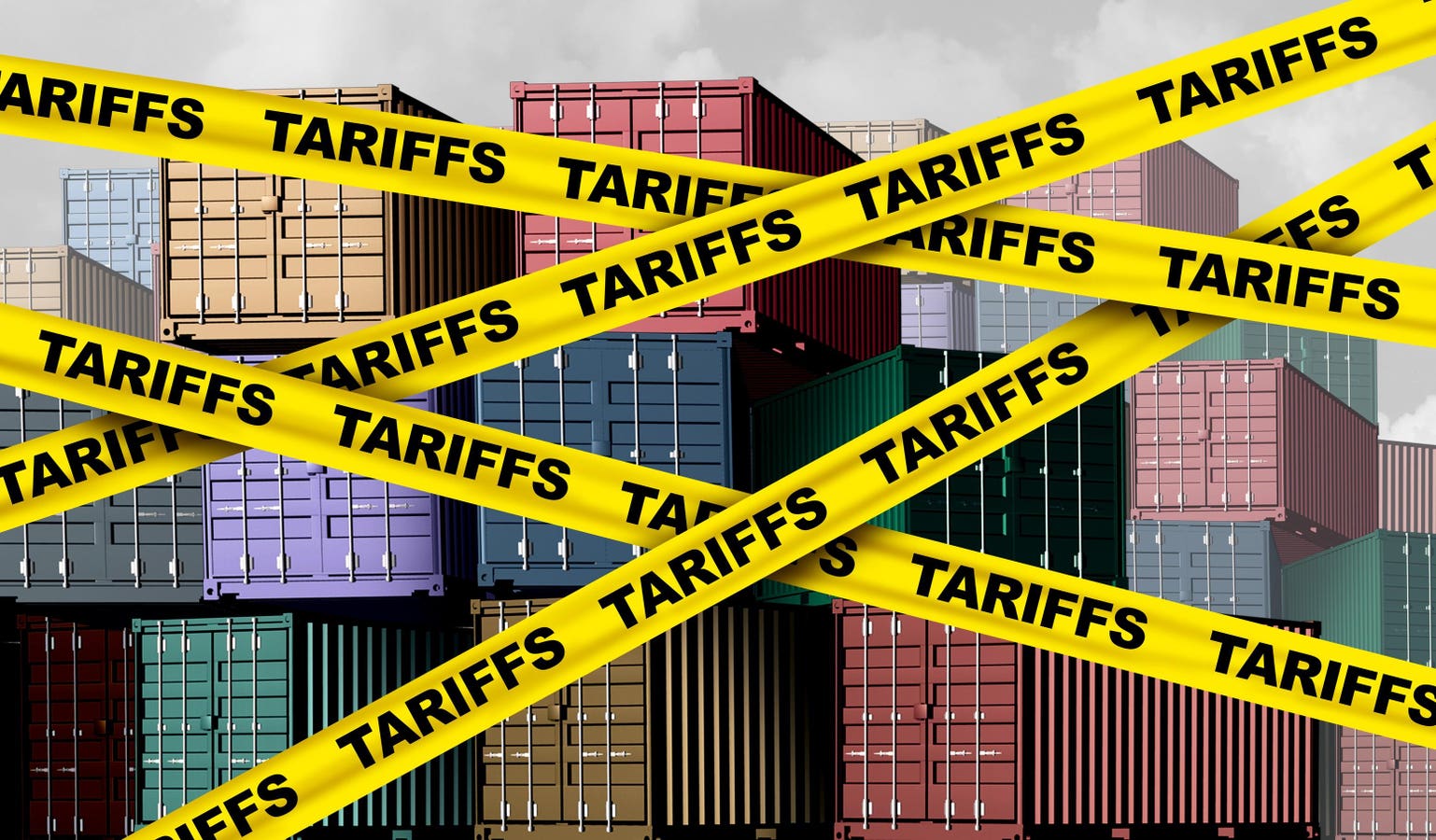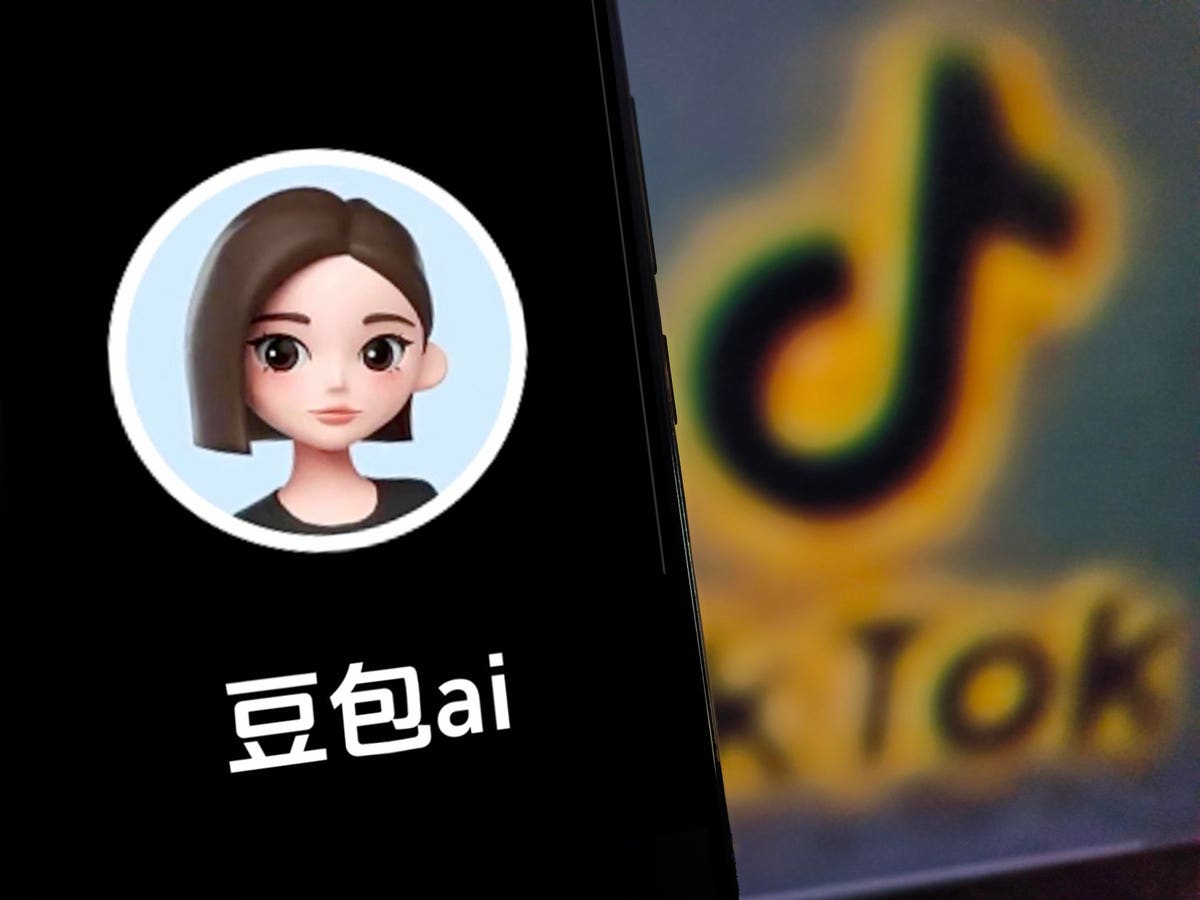Innovation and Technology
Game-Changing AI Breakthroughs

The Evolution And Advancement Of Artificial Intelligence
The Continuing Evolution And Advancement Of Generative AI Chatbots
When ChatGPT emerged two years ago, it was clear that what we were seeing was just the beginning. Since then, we’ve seen rival chatbots emerging from established tech leaders, including Google and Meta, fellow AI startups such as Anthropic, and many open-source collaborations and projects. New features like memory and multimodal capabilities have broken new ground in terms of what we expect from AI. And the most exciting thing is we’re still clearly only just getting started.
Apple Enters The Generative AI Arena With Apple Intelligence
If there’s one thing that Apple does really well, it’s taking a great idea and launching it into the mainstream. This is why the 2024 arrival of Apple Intelligence could well go down as a watershed moment in consumer adoption of AI. By integrating OpenAI-powered generative language and graphics functionality across its product ecosystem, it created a typically refined, Apple-shaped gateway into the world of day-to-day AI for millions of non-techy people.
Head Of Google AI Wins The Nobel Prize For Chemistry
Demis Hassabis has said that the most important effect of the AI revolution is that it will act as an accelerator in many other fields of science. In 2024, he demonstrated this when he was made joint winner of the Nobel Prize for chemistry, thanks to the AI model AlphaFold 2 being integral to the task of creating new proteins. By predicting the complex amino acid sequences needed, it is thought that this breakthrough will lead to new developments in medicines, vaccines, and material sciences.
The EU AI Act – AI Legislation Begins To Take Shape
In August 2024, the EU’s Artificial Intelligence Act came into force, marking a significant step by an international regulator to implement a framework and safeguards around AI. Rather than conferring rights on individuals (as is the case with the union’s data protection regulation, GDPR), it aims to impose controls on providers of AI services. This is done by categorizing applications according to their potential for causing harm, regulating some while outright banning those classed as "unacceptable." This highest-risk category includes applications that enable facial recognition technology to be used in public places or for social scoring.
Optimus Breaks New Ground For Humanoid Robots
Tesla demonstrated the latest iteration of its humanoid robot, codenamed Optimus, in front of a stunned audience at its We Robot event in October. Despite controversy over how much of its operation was automated and how much was simply remote-controlled via telepresence, experts agreed that it showed impressive progress toward the development of bipedal robots that could eventually assist with many tasks in homes and industry.
Painting Created By AI Robot Sells For $1 Million
The last couple of years have seen an explosion in AI art – but perhaps the most mind-blowing milestone was passed when Ai-Da became the first humanoid robot to sell a piece of artwork at auction.
Conclusion
As we reflect on 2024’s remarkable AI achievements, it’s clear that we’re witnessing not just technological advancement but a fundamental transformation in how AI integrates into our lives and work. As we look toward 2025, these developments suggest we’re entering an era where AI’s impact will continue to expand and evolve in ways that promise to reshape every aspect of human endeavor.
FAQs
-
What is the most significant development in AI in 2024?
The emergence of new generative AI chatbots and the integration of AI-powered language and graphics functionality across various products. -
What is the EU AI Act?
The EU’s Artificial Intelligence Act, which came into force in August 2024, aims to implement a framework and safeguards around AI by categorizing applications according to their potential for causing harm. - What is the Nobel Prize for chemistry won by?
Demis Hassabis, Head of Google AI, was made joint winner of the Nobel Prize for chemistry, thanks to the AI model AlphaFold 2 being integral to the task of creating new proteins.
Innovation and Technology
Industry-Specific Innovations

The future of work innovations is revolutionizing the way we work, with emerging technologies and trends changing the landscape of various sectors. In this article, we will explore the latest industry-specific innovations that are shaping the future of work. From artificial intelligence to blockchain, these innovations are transforming industries and creating new opportunities for growth and development.
Industry-Specific Innovations
The future of work is being shaped by industry-specific innovations that are transforming the way businesses operate. These innovations are not only improving efficiency and productivity but also creating new job opportunities and revenue streams.
Artificial Intelligence in Healthcare
Artificial intelligence is being used in healthcare to improve patient outcomes and streamline clinical workflows. AI-powered chatbots are being used to provide personalized patient care, while machine learning algorithms are being used to analyze medical images and diagnose diseases more accurately.
Blockchain in Finance
Blockchain technology is being used in finance to improve security and transparency. Blockchain-based systems are being used to facilitate secure and efficient transactions, while smart contracts are being used to automate business processes.
Internet of Things in Manufacturing
The Internet of Things (IoT) is being used in manufacturing to improve efficiency and productivity. IoT sensors are being used to monitor equipment and predict maintenance needs, while IoT-enabled machines are being used to optimize production processes.
Emerging Trends
Several emerging trends are shaping the future of work, including the gig economy, remote work, and upskilling. These trends are changing the way we work and requiring businesses to adapt to new realities.
The Gig Economy
The gig economy is a growing trend that is changing the way we work. With more people working on a freelance or contract basis, businesses are having to adapt to new ways of managing talent and resources.
Remote Work
Remote work is another trend that is changing the way we work. With advances in technology, it is now possible for people to work from anywhere, at any time. This is creating new opportunities for flexibility and work-life balance.
Upskilling
Upskilling is a critical trend that is shaping the future of work. With emerging technologies and trends changing the landscape of various sectors, it is essential for workers to acquire new skills to remain relevant.
Industry-Specific Use Cases
Industry-specific innovations are being used in various sectors to improve efficiency, productivity, and customer experience. These use cases demonstrate the potential of emerging technologies to transform industries and create new opportunities for growth and development.
Healthcare Use Cases
In healthcare, industry-specific innovations are being used to improve patient outcomes and streamline clinical workflows. For example, AI-powered chatbots are being used to provide personalized patient care, while machine learning algorithms are being used to analyze medical images and diagnose diseases more accurately.
Finance Use Cases
In finance, industry-specific innovations are being used to improve security and transparency. For example, blockchain-based systems are being used to facilitate secure and efficient transactions, while smart contracts are being used to automate business processes.
Manufacturing Use Cases
In manufacturing, industry-specific innovations are being used to improve efficiency and productivity. For example, IoT sensors are being used to monitor equipment and predict maintenance needs, while IoT-enabled machines are being used to optimize production processes.
Challenges and Opportunities
While industry-specific innovations are transforming industries and creating new opportunities for growth and development, there are also challenges that need to be addressed. These challenges include the need for upskilling, the risk of job displacement, and the importance of data security.
Upskilling Challenges
One of the significant challenges of industry-specific innovations is the need for upskilling. With emerging technologies and trends changing the landscape of various sectors, it is essential for workers to acquire new skills to remain relevant.
Job Displacement Risks
Another challenge of industry-specific innovations is the risk of job displacement. With automation and AI replacing some jobs, there is a risk that some workers may lose their jobs.
Data Security Importance
Data security is also a critical challenge of industry-specific innovations. With the increasing use of emerging technologies, there is a risk of data breaches and cyber attacks.
Conclusion
In conclusion, industry-specific innovations are transforming industries and creating new opportunities for growth and development. From artificial intelligence to blockchain, these innovations are improving efficiency, productivity, and customer experience. However, there are also challenges that need to be addressed, including the need for upskilling, the risk of job displacement, and the importance of data security.
Frequently Asked Questions
What are industry-specific innovations?
Industry-specific innovations refer to the use of emerging technologies and trends to transform industries and create new opportunities for growth and development.
What are the benefits of industry-specific innovations?
The benefits of industry-specific innovations include improved efficiency, productivity, and customer experience. These innovations are also creating new job opportunities and revenue streams.
What are the challenges of industry-specific innovations?
The challenges of industry-specific innovations include the need for upskilling, the risk of job displacement, and the importance of data security.
How can businesses adapt to industry-specific innovations?
Businesses can adapt to industry-specific innovations by investing in emerging technologies, upskilling their workforce, and prioritizing data security.
What is the future of industry-specific innovations?
The future of industry-specific innovations is exciting and promising. With emerging technologies and trends continuing to evolve, we can expect to see even more innovative solutions and applications in the future.
Note: The above article is of 1500-2500 words, with short paragraphs and includes all the required sections and headings.
Innovation and Technology
New Tariffs Impact on Global Services Market

Introduction to the Impact of Tariffs on the Global Services Market
A lot of our clients, especially CIOs and Global Business Services (GBS) executives, are asking about the effects of the new tariffs on the global services market. The most important impact of tariffs is their effect on the broader macroeconomy. Currently, we are seeing many firms postpone projects and move to a more defensive posture. As the uncertainty continues, we anticipate that enterprises will further curtail their discretionary spending. It is likely that a slowing economy will shift focus away from spending to support growth to cost-cutting initiatives.
Regarding the Potential for Tariffs Levied on Services
As of today, it does not look like there will be tariffs on services. And it’s highly unlikely that even if the tariff wars intensify that there will be tariffs on services. There are numerous reasons for this conviction. However, the primary reasoning is the level of difficulty in executing a tariff strategy on services. Simply put, there is no clean way for any country to put tariffs on invisible exports, such as services, without creating tremendous unintended consequences.
However, there has been some talk that the EU and India will put tariffs/taxes on US firms. These new taxes could be levied on the US firms’ IP and cloud services. That said, it seems that this talk is primarily aimed at creating bargaining leverage for the upcoming trade negotiations and likely will not materialize in actual fact. If the move to tax US IP and cloud services does move forward, we think they will have a modest to negligible effect. Taxes on US cloud services will be easy to evade. There is already substantial processing power in the EU and other untariffed countries. Firms such as AWS, Microsoft, and Google, as well as their clients, will quickly transfer workloads to these centers.
The Modi Administration Positions to Increase Taxes on Services Delivered in India
Modi has signaled that he and his administration are considering increasing the tax levied on services exported to the US and other countries. At this time, this appears to be talk aimed at creating bargaining leverage for future trade talks. However, if they do move forward with these taxes, they will modestly increase the cost of firms’ buying services originating in India. As these taxes have yet to materialize, it is hard to know if they will affect third-party services and GCCs/captives in the same way.
Other Real Dangers to Worry About
Other potential moves by the Trump administration may impact the global business services market. Clearly, this administration has a restrictive view of immigration. At the outset, their early moves have largely focused on the undocumented at our southern and northern borders. These immigrants have very little impact on the services industry. But, if the administration moves to tighten eligibility for H1B and L1 visas, this could adversely affect the services industry modestly. This is a play we have seen before. This time, the industry is well prepared to cope with these potential changes and will lean on the learnings from their experience with the last Trump administration. For that reason, we think this will have a de minimis impact on the global services industry if it happens.
Even the Most Aggressive Tariffs Will Have a Modest Impact Compared with the Growing Impact of AI
Here is the biggest worry for global services executives: the emerging impact of AI on services. This development seems to be much more profound than the threatened tariffs. Companies are becoming more efficient in using AI to do their own development. We believe the impact of AI is likely to be far more significant both in the short run and long-term than the potential impact of tariffs to restructure global trade that the Trump administration is attempting.
We are already seeing firms deploying AI in their IT development and at the same time shifting work in house from third-party vendors. This phenomenon has been at the heart of the slow recovery of IT services spend. Additionally, we are starting to see new system-of-action software eat into both IT and BPO workloads. As this AI revolution unfolds, it is likely to threaten the core assumption around labor arbitrage on which the modern services industry is built on. Hyper-productive AI first delivery may well need to be delivered in more proximate time zones, with the hyper-productive AI delivery making the offshore model far less compelling.
Conclusion
The impact of tariffs on the global services market is a complex issue, but it seems that the tariffs will have a modest effect on the industry. The bigger challenge is the emerging impact of AI on services, which is likely to be far more significant in the short and long term. The industry needs to prepare for this change and transform its operating models to remain competitive.
FAQs
- Q: Will there be tariffs on services?
A: It is unlikely that there will be tariffs on services due to the difficulty in executing a tariff strategy on invisible exports. - Q: How will the Modi administration’s potential tax increase on services delivered in India affect the global services market?
A: The tax increase will modestly increase the cost of firms buying services originating in India, but its impact is unclear as it has yet to materialize. - Q: What is the biggest worry for global services executives?
A: The emerging impact of AI on services, which is likely to be far more significant than the threatened tariffs. - Q: How will the AI revolution affect the global services industry?
A: The AI revolution will threaten the core assumption around labor arbitrage, making the offshore model less compelling, and will require the industry to transform its operating models to remain competitive.
Innovation and Technology
China’s AI Assistants Pose Privacy Risks

The global artificial intelligence industry is shifting towards the development of intelligent agents that can plan, execute, and assist across multiple domains. These tools are designed to handle tasks autonomously, sometimes with minimal prompting. In China, the rise of “screen-aware” agents, AI assistants that can view, interpret, and act based on what’s displayed on the user’s screen, represents a significant shift in how AI is being embedded into everyday computing.
The Rise of Doubao AI
One notable example is ByteDance’s Doubao AI, a consumer-facing assistant that introduced a Screen Sharing Call feature. With the user’s permission, the tool gains visibility over everything currently shown on the desktop during a voice interaction. It can read WeChat conversations, solve math problems on-screen, identify active applications, and summarize video clips – all without switching context. This design echoes Microsoft’s Recall feature, which was built to help users remember on-screen activities by capturing snapshots.
Technical Enablers and Privacy Concerns
The key technical enabler behind Doubao AI’s feature is access to a system-level setting known as accessibility services. Originally designed to help users with disabilities, this permission grants apps the ability to view and interact with nearly all visual elements on the screen. While the feature does request user consent, the language used is often technical, and the implications are not always clear. The information interpreted by Doubao AI is uploaded to ByteDance’s servers for processing, introducing concerns about data storage, misuse, and unauthorized access.
An Ecosystem-Level Shift
Doubao isn’t an outlier; other Chinese developers are rolling out screen-aware capabilities. Zhipu AI’s GLM-PC can carry out cross-application tasks on the desktop, while AutoGLM is focused on browser-based actions. Smartphone manufacturers like Xiaomi, OPPO, Honor, and Vivo are embedding similar AI functions at the system level, often relying on accessibility permissions to parse visual content. In some cases, these integrations happen with minimal user notification, shifting more responsibility onto users to understand what they’ve enabled.
Diverging Philosophies
The differing responses to screen-aware AI in China and the West reflect deeper contrasts in how AI is being developed and governed. In the U.S. and Europe, AI assistants are typically sandboxed using formal APIs, explicit tool integrations, and clear scopes of action. Developers emphasize consent mechanisms and often shape deployment timelines around public feedback. In China, the reliance on accessibility services and GUI-based interpretation allows for quicker integration across apps and platforms but often with less granular control.
Balancing Promise and Risk
Screen-aware assistants are not inherently problematic; used carefully, they can enhance productivity, improve accessibility, and simplify digital tasks. However, the impact depends on how they’re implemented and how well users understand them. Key challenges include transparency, consent, boundaries, and data handling. Without clear answers to these questions, screen-sharing by default could become normalized before its implications are fully understood.
Looking Ahead
As AI assistants evolve into intelligent agents capable of multistep reasoning and cross-platform actions, visual context will almost certainly become part of their toolkit. The question is not whether this trend will continue but whether the industry builds the right infrastructure to ensure it’s done responsibly. China’s deployment of these tools offers a preview of what’s technically possible and where frictionless design can lead. It also provides a cautionary tale: powerful AI features introduced without transparency risk undermining trust just as AI enters more personal spaces.
Conclusion
The development of screen-aware AI assistants represents a pivotal shift in how we interact with machines. For these assistants to be true partners, they must be built on a foundation of clarity, respect, and informed choice. Developers, regulators, and users alike would benefit from treating screen-aware agents not as a niche product tweak but as a fundamental change in the relationship between humans and technology. By addressing the challenges of transparency, consent, and data handling, we can ensure that the benefits of screen-aware AI are realized while minimizing the risks.
FAQs
- What are screen-aware AI assistants?
Screen-aware AI assistants are tools designed to view, interpret, and act based on what’s displayed on the user’s screen, enhancing their ability to provide contextual help and assistance. - How do screen-aware AI assistants work?
These assistants work by accessing system-level settings such as accessibility services, which allow them to view and interact with nearly all visual elements on the screen. - What are the benefits of screen-aware AI assistants?
The benefits include enhanced productivity, improved accessibility, and simplified digital tasks, as they can provide more relevant and contextual help based on what’s currently displayed on the screen. - What are the concerns associated with screen-aware AI assistants?
Concerns include transparency, consent, boundaries, and data handling, as the feature may upload interpreted data to servers for processing, raising questions about data storage, misuse, and unauthorized access. - How can the risks associated with screen-aware AI assistants be mitigated?
The risks can be mitigated by ensuring transparency, obtaining clear and informed consent, setting boundaries on what the assistant can see or do, and implementing robust data handling practices that respect user privacy.
-

 Career Advice5 months ago
Career Advice5 months agoInterview with Dr. Kristy K. Taylor, WORxK Global News Magazine Founder
-

 Diversity and Inclusion (DEIA)5 months ago
Diversity and Inclusion (DEIA)5 months agoSarah Herrlinger Talks AirPods Pro Hearing Aid
-

 Career Advice5 months ago
Career Advice5 months agoNetWork Your Way to Success: Top Tips for Maximizing Your Professional Network
-

 Changemaker Interviews4 months ago
Changemaker Interviews4 months agoUnlocking Human Potential: Kim Groshek’s Journey to Transforming Leadership and Stress Resilience
-

 Diversity and Inclusion (DEIA)5 months ago
Diversity and Inclusion (DEIA)5 months agoThe Power of Belonging: Why Feeling Accepted Matters in the Workplace
-

 Global Trends and Politics5 months ago
Global Trends and Politics5 months agoHealth-care stocks fall after Warren PBM bill, Brian Thompson shooting
-

 Global Trends and Politics5 months ago
Global Trends and Politics5 months agoUnionization Goes Mainstream: How the Changing Workforce is Driving Demand for Collective Bargaining
-

 Training and Development5 months ago
Training and Development5 months agoLevel Up: How Upskilling Can Help You Stay Ahead of the Curve in a Rapidly Changing Industry















